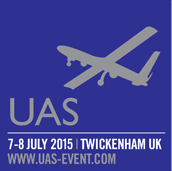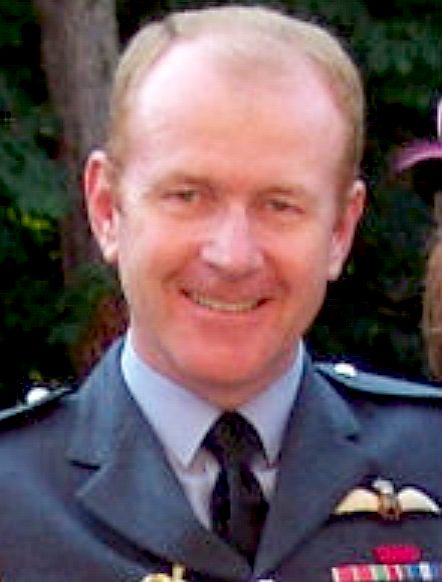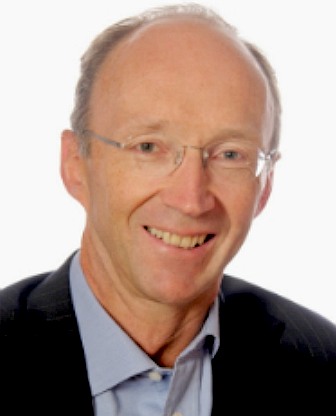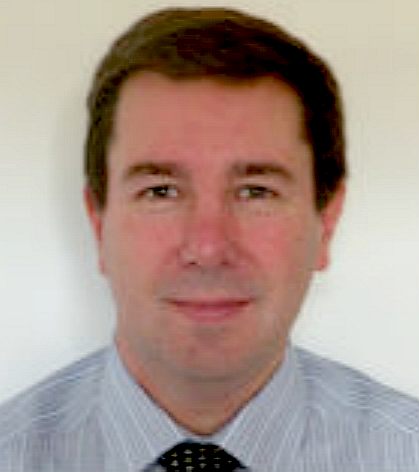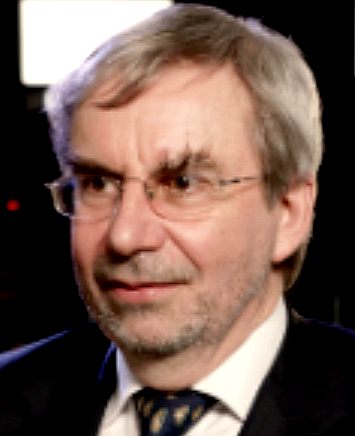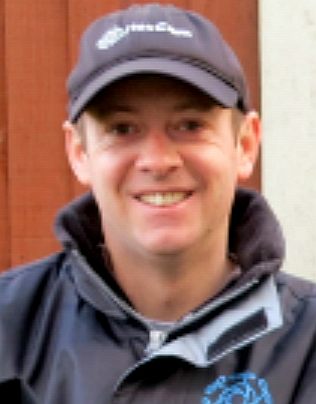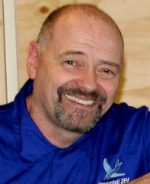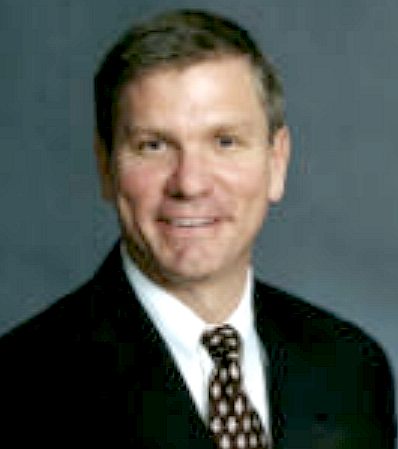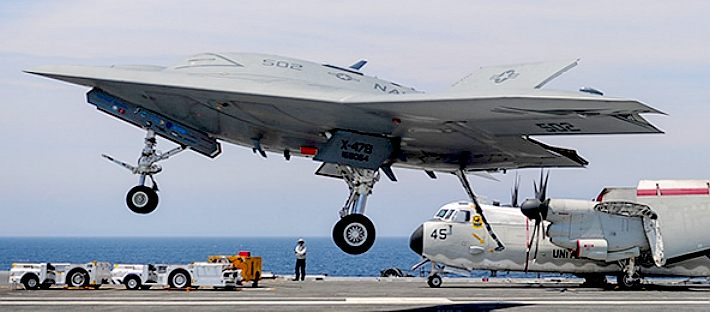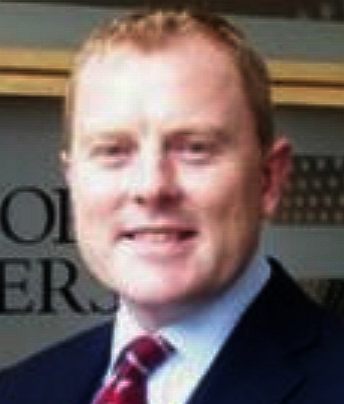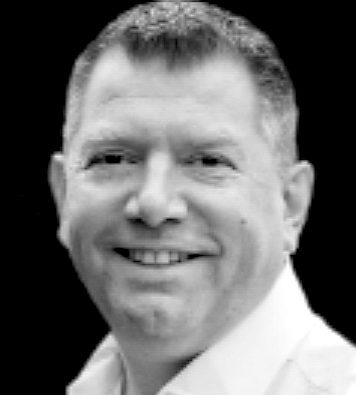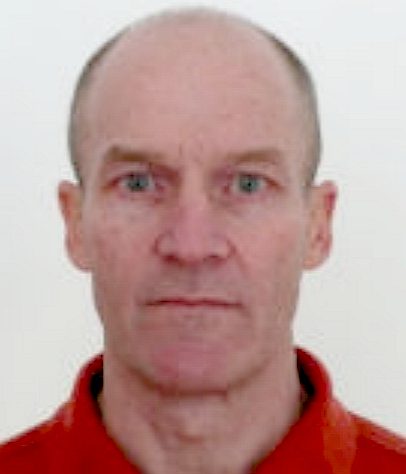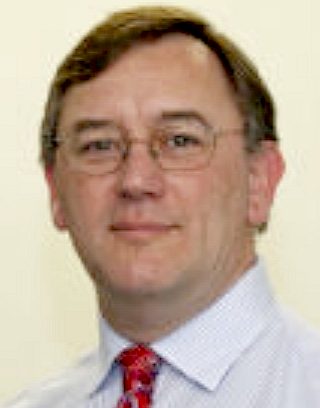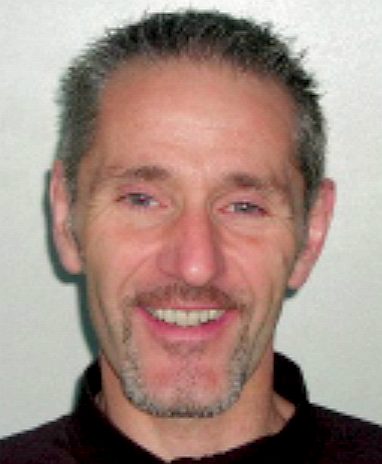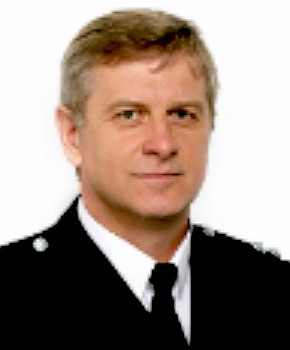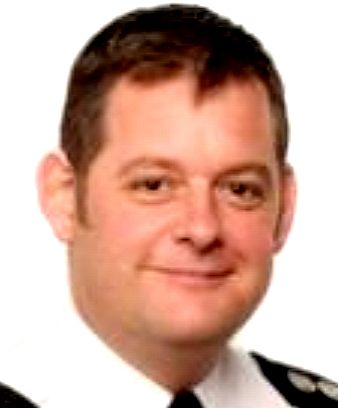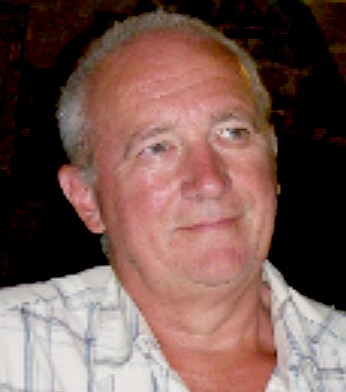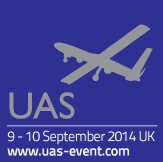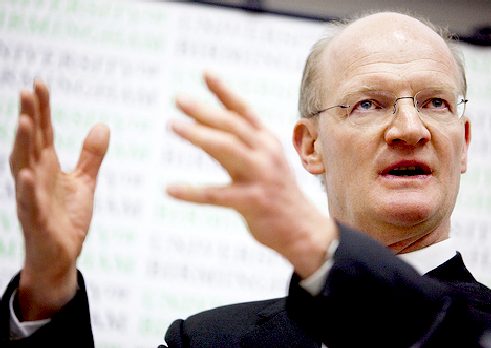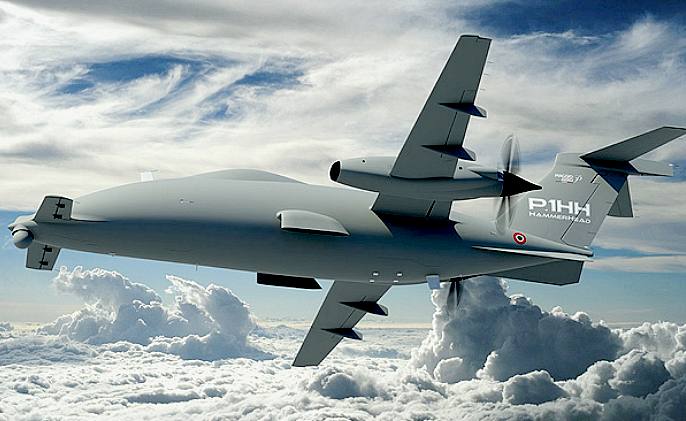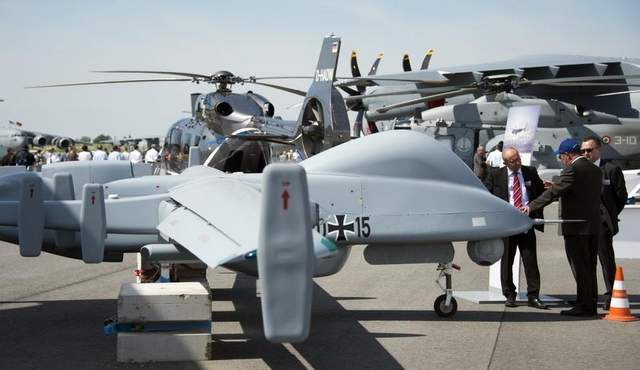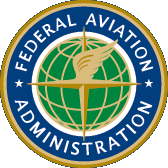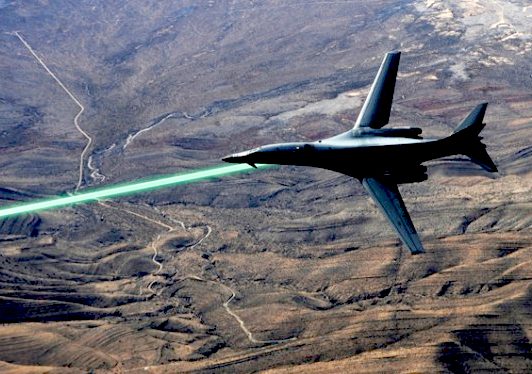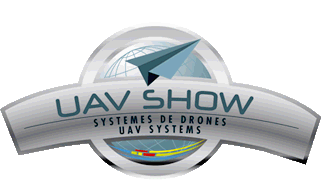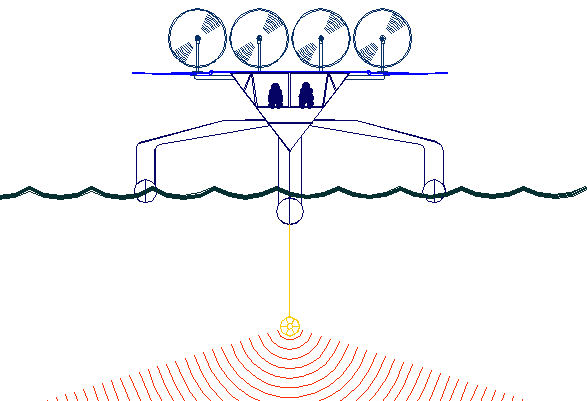|
UAS - UNMANNED AIR SYSTEMS CONFERENCE, 9 - 10 SEPT 2014
|
|||||||||||||||||||||||||
|
The Thales Watchkeeper WK450 (RPAS), Intelligence, Surveillance, Target Acquisition and Reconnaissance (ISTAR) drone.
CONFERENCE NEWS ROUND UP - 11 SEPT 2014
We were fortunate to have a speaker at this event who passed us his notes verbatim. He reports that the venue was more than adequate to cope with many such gatherings in tandem. Around 300 delegates were in evidence. The feedback was that this venue should be added to the calendar of anyone serious about keeping pace with UAS and other unmanned technology. The basic ingredients for a problem free conference were all in place to include ample parking for those with cars. The organizers were friendly and helpful, greeting all attending at first registration. The hospitality was also a comfort, providing a suitable backdrop for the all important networking sessions, or simply for sustenance.
One slight hiccup was that the remote page changer for the many PowerPoint presentations appeared to have a slight delay, prompting presenters to modify their style, as they were part thinking on whether or not the slide would change in time with their presentation. Our (BMS) representative was the first to come across the issue, which he said altered his presentation, but then all of the other speakers had to cope similarly - when the techies operating the computer equipment to the rear of the hall came to the rescue - changing slides for speakers on demand. The most affected was Timothy Beard and Scott Winship, mainly because their presentation on behalf of Northrop Grumman relied on a superb PowerPoint slide show with video footage. The presentation was impressive nonetheless. We can't wait to report on the latest advances and thinking at the event planned for 2015.
AGENDA 2014
The 3rd Annual UAS Conference
took place on 9-10 September
2014 at Twickenham Stadium. *
Press *
Traffic
monitoring * Mining and survey * Law enforcement *
Military
CHAIRMAN - Air Marshal Philip Sturley CB MBE - Has been involved with Unmanned Aircraft Systems (UAS) for nearly 15 years. He was the first senior UK joint coordinator for military UAS development as Assistant Chief of the Air Staff in MOD. This was at a time when air forces were beginning to appreciate the enormous potential UAS could make to future air operations, particularly where persistence was required. The Air Marshall was also Chief of Staff at the NATO Air HQ. Since then, he has been chairing conferences on UAS around the world and for the last 8 years, AM Sturley has been a Specialist Adviser to the House of Commons Defence Committee (HCDC) on all aspects of UAS operations.
THE CHAIRMAN
Air Marshall Sturley chaired the conference superbly, not only coordinating the event and introducing speakers in his unhurried manner, but also bringing his experience in operations to the table when seeking to clarify points that may have been raised by those presenting - of which there were many. There was a wide variety of topics, to include agriculture and biology, that may seem far removed from the focus of UAS, but part of the debate was that the use of unmanned aircraft is a valuable tool for farmers and environmental scientists, not just the military or those wanting film footage for movies or media broadcasts. There was though a significant military contingent, with the Royal Navy featuring highly in the numbers.
KEYNOTE SPEAKER - Matthew Baldwin is the Director of Aviation and International Transport Affairs, European Commission. He was recently Director in DG Trade in charge of market access and industry matters. Before that, he was deputy chief of staff for five years in Commissioner Lamy's cabinet, covering all trade issues, notably the launch of the Doha Round and China's accession to the WTO. From 2007-10 Matthew served in President Barroso's cabinet as advisor for all issues relating to trade, energy, development and climate change. Before joining the Commission in 1999, he worked for the British Government in a variety of posts in London, Brussels and Washington. He worked on a range of issues such as US trade policy, competition, the Single Market, and energy. He is responsible for: Coordination of international transport policy; The EU's international aviation negotiations; Aviation single market; developing the Single European Sky reforms for Europe's air traffic control system; Air safety issues; Aviation and the environment; Airports and infrastructure.
EUROPEAN COMMISSION
Tuesday morning (9-9-14) kicked off with the director of Aviation and Transport, Matthew Baldwin, giving a presentation on UAS from an EU perspective. The message seemed to be that the EU wished to keep pace with the rest of the world, such as to provide an administrative base to encourage, rather than stifle growth, in what is seen as an emerging technological market. The focus seemed to be mainly on civilian opportunities and economic benefits for smaller aircraft - as features popularly in the press relating to privacy issues. Baldwin played down the necessity for the military to keep pace and develop such markets (with drones) as the UK (or EU) might have done in years gone by, given the broad domestic knowledge base that may otherwise be looking for openings in more fertile regions.
PANEL DISCUSSING REGULATIONS
PANELIST - Gerry Corbett joined the CAA’s Safety and Airspace Regulation Group in June 2012, where he is the CAA’s focal point for all matters associated with the operation of Unmanned Aircraft Systems in UK airspace. He is also the sponsor for Civil Aviation Publication 722, the primary guidance document for Unmanned Aircraft System Operations in UK Airspace. Immediately prior to this he undertook a similar role whilst working as a serving Royal Naval officer on a 3 year secondment to the CAA’s Directorate of Airspace Policy (DAP). During this period, the focus of the UAS ‘portfolio’ moved from being purely an airspace issue to more one of Operations and Airworthiness. Gerry has a background as a military Air Traffic Control Officer and has served airfield and Area Radar units ashore in the UK and at sea worldwide from the RN's Aircraft Carriers. He has also held a number of staff posts with the RN and RAF in the maritime air safety, aviation incident investigation and ATC equipment procurement roles.
PANELIST - Lambert Dopping-Hepenstal FREng, CEng, FIET, FRAeS worked for BAE Systems and its predecessor companies for 41 years, retiring as Engineering Director Systems and Strategy for Military Aircraft & Information in 2013. He was a systems design engineer on Hawk, Sea Harrier and Harrier II and managed the systems development of Tornado and Typhoon before running the Military Aircraft research programmes. Following the formation of BAE Systems, he moved to the centre as corporate Technology Director. He was elected a Fellow of the Royal Academy of Engineering in 2007. He has been the ASTRAEA Programme Director since 2006.
PANELIST - Elliott Corke started HexCam in 2012 and has been operating commercially, specializing in multi-rotors, for 2 years. He is UK Legislation Representative for ARPAS-UK (Association of Remotely Piloted Aircraft Systems – UK) and runs flight training courses to prepare pilots for the current UK qualifications that lead to a CAA Permission for Aerial Work. Elliott’s Marine Biology degree and background in environmental education means that many of his projects are related to environmental, agricultural and conservation uses of UAS technology.
PANELIST
- Nelson Kruschandl is a conceptual design engineer at Bluebird Marine Systems Ltd, Sussex, UK. He won the physics prize at Ratton School, thereafter attending Eastbourne College of FE and Brighton College. He hand built a car with joystick controls in 1986 for which he was granted patent GB2218187 in 1992. In 1995 he was granted patent GB2253379 for an electric vehicle instant charging system, since when he has worked on sustainable smart cities and EV infrastructure support.
CIVIL AVIATION AUTHORITY
Refreshingly, Gerry Corbett began by saying that the CAA were listening. Regulators so often want to jump on new technology, in so doing stifling development, both economic and technical. The most draconian restrictions by regulators must be the absurd speed limits that were imposed by the Locomotive Act 1865 (the "Red Flag Act") which required all road locomotives, which included automobiles, to travel at a maximum of 4 mph (6.4 km/h) in the country and 2 mph (3.2 km/h) in the city - as well as requiring a man carrying a red flag to walk in front of road vehicles hauling multiple wagons. Thirty-one years later the 1896 Act removed some restrictions of the 1865 act and raised the speed to 14 mph (23 km/h), but still the limits were insensible to the potential for transport - because of course, regulators are not innovators.
There was none of this with Gerry. He (the CAA) seemed content to allow development of the industry relying on existing law to regulate the use of 'hobby' craft in the hands of the uninitiated, where experienced UAS operators who might offer a specific service, appeared more than aware of their responsibilities. The problems that were likely to arise may thus be misuse, or rather, inattention to, or lack of knowledge of the rules. This begs a solution by way of education, should the CAA care to be proactive.
ASTRAEA - AUTONOMOUS SYSTEMS TECHNOLOGY RELATED AIRBORNE EVALUATION & ASSESSMENT
ASTRAEA is a project to develop UAVs to fly in civil airspace. Both UK government agencies and a consortium of companies such as BAE Systems, Qinetiq, Rolls-Royce plc, Airbus Defence & Space, Cassidian, Cobham plc, EADS and Thales UK are involved. The project began in 2006. Currently UAVs can only operate in UK airspace under restricted conditions.
The aim of the
ASTRAEA programme is to enable the routine use of UAS
in all classes of airspace without the need for restrictive or specialised conditions of operation. This
is to be achieved through the coordinated development and demonstration of key technologies and operating procedures required to open up the airspace to
UAS.
"will likely impact all of us in the next five, 10, 20 years as unmanned aircraft and associated technology develop and become a part of everyday life". The governments Business and energy minister Michael Fallon said: "We welcome this pioneering flight at the end of the ASTRAEA programme. ASTRAEA has made significant achievements, placing the UK industry in a good position globally on unmanned aircraft and the development of regulations for their civil use."
ARPAS UK - ASSOCIATION of REMOTELY PILOTED AIRCRAFT SYSTEMS
The
objectives of ARPAS are the organisation, representation, promotion and encouragement of small unmanned aircraft systems or remotely-piloted aircraft systems flying and operation in all its aspects nationally and internationally through the medium of individual and operating company
members.
SPEAKER - Timothy R. Beard, a retired US Navy Rear Admiral, is the Head of Program Integration for Northrop Grumman Aerospace System’s Advanced Air Warfare Development group. Since joining Northrop Grumman following his USN career he served as Director of Unmanned Systems Business Development and then as the deputy program manager for the Fire Scout and USN UCAS-D (Unmanned Combat Air System carrier Demonstration) programs. He was also the carrier integration team lead for the UCAS-D program and is currently involved with advanced air warfare strategy development as well as marketing for the UCAS program.
SPEAKER - Scott Winship is vice president of Advanced Air Warfare Development at Northrop Grumman Aerospace Systems. He is responsible for strategic integration and pursuit of new opportunities in the Strategic Systems portfolio that includes several restricted advanced program pursuits for global surveillance and strike programs. He has served as the Vice President and Program Manager of the Navy X-47B Unmanned Combat Air System carrier Demonstration (UCAS-D) program, PM for first flight of the Fire Scout VTUAS program. He led pursuit evaluation and proposal strategy development for the Presidential Helicopter Replacement and the Combat Rescue Helicopter programs. Prior to joining Northrop Grumman, Winship managed the Joint Strike Fighter X-35B STOVL program at Lockheed Martin Skunk Works and was a team leader in the X-35 and the YF-22/F-22 programs.
NORTHROP GRUMMAN
Northrop Grumman Corporation is a US global aerospace and defense technology company formed by the 1994 purchase of Grumman by Northrop. The company was the fourth-largest defense contractor in the world as of 2010. Northrop Grumman employs over 68,000 people worldwide. It reported revenues of 25.218 billion in 2012. Northrop Grumman ranks No. 72 on the 2011 Fortune 500 list of America's largest corporations and ranks in the top ten military-friendly employers. It is headquartered in West Falls Church, Virginia.
Timothy Beard and Scott Winship gave a superb presentation at the UAS conference in London. A packed auditorium was shown the development of the X-47B as may be deployed in various theatres of operation. The duo's lively talk was made more interesting as each speaker took over from the other at various crossover points, such as to complement their areas of expertise. The projector slides were well prepared and informative, crowned with a video that showed the take off and landing of the tailless, strike fighter-sized unmanned aircraft developed by their company as part of the U.S. Navy's Unmanned Combat Air System (UCAS) Carrier Demonstration program. One slight hiccup was the transition between projector slides, which both presenters coped with well - and did not detract from the importance of their work.
History in the making: the Northrop Grumman X-47B unmanned combat aircraft takes off and lands on a UN Navy aircraft carrier, without a pilot onboard.
The X-47B UCAS is designed to help the US Navy explore the future of unmanned carrier aviation. The successful flight test program is setting the stage for the development of a more permanent, carrier-based fleet of unmanned aircraft. The contract to develop this technology was awarded in 2007. In 2013, these aircraft made history with a demonstration of the first ever carrier-based launch and recovery by an autonomous, unmanned aircraft. The program is currently maturing relevant carrier launch, landing, and integration technologies. The logical development of this technology is to amalgamate with the latest developments in unmanned shipping, being pioneered by Rolls Royce at present as part of the MUNIN collaboration for cargo vessels, and of course ourselves (BMS) in connection with all forms of ocean going craft, to include submarines.
PANEL DISCUSSING UAS OPERATIONS IN BROADCASTING
PANELIST - Peter Lee is a senior commercial technology lawyer at Taylor Vinters LLP. He enjoys working in sectors where disruptive technologies interface with law and regulation – a good example is unmanned systems, otherwise known as drones, but his practice also includes software (SaaS, apps, free and open source code etc.), financial technology, digital media, data aggregation and big data matters. Many of the projects he works on are international in nature. Outside of the law (but not illegally) he has variously been a marine biologist, soldier and co-founder of a failed tech start-up company. Peter is recognised as one of Europe’s leading unmanned systems lawyers; he regularly speaks at conferences, writes and blogs on the subject.
PANELIST - Creative Director and Founder 'Dependable Productions.' Richard Critchlow is Creative Director and founder of Dependable Productions, an end to end video production company which operates aerial filming UAS for their own and third party productions. Prior to establishing Dependable, Richard was a Senior Producer of Special Events at the BBC and was responsible for large scale outside broadcasts, many of which used helicopters as camera platforms and mid points. For many years, he looked after BBC News’ relationship with aerial filming suppliers giving him a deep insight into both the possibilities and limitations of helicopters in broadcast. When he saw the possibilities offered by filming from UAS he could see the potential they offered and set about gaining the necessary BNUC-S qualification to allow Dependable Productions to carry out aerial work. In doing so, he also unwittingly embarked on what has become one of the steepest learning curves of his career!
PANELIST - Mr Mike Garner is a Broadcast Documentary Cameraman and UAS operator. Mike was born in Zimbabwe in 1954. He was educated in Zimbabwe and started with Zimbabwe Television in August 1977 working in the studios. He moved to the UK in April 1977 and started a television career in London with Zoom Television in April 1978 doing Corporate and Commercial working in the Studio and Outside Broadcast unit. In Feb 1980 he joined ITN news started in the studios and outside broadcast before moving to news gathering as a cameraman in June 1982. Mike was a news cameraman traveling in the UK and World Wide on all major news events until August 1989 when I left to become freelance. In August 1989 to the present he freelances as a documentary cameraman for all major Broadcasters, BBC, ITV, CH4, CH5, Discovery, National Geographic, Sky. He has worked with David Dimbleby, Jeremy Paxman, Dan Cruickshank, Jimmy Doherty, Fiona Bruce , Michael Moseley, and many other presenters on a wide range of programmes. Science, History, Arts, Travel, Current Affairs. Mike started flying UAS 5 years ago when he saw the potential of the new technology. He's done aerial work for Sky 3D with David Attenborough at Kew, a 3D Wildlife shoot for Sky in Masai Mara game reserve, Kenya. Other aerial work has been for BBC, Ch4, Ch5, ITV, Discovery and has travelled to USA, Morocco, Mexico, Spain, Italy, Kenya, Cambodia, South Korea, with his UAS system. He continue to be employed as a UAS operator on a wide variety of Broadcast programmes.
PANELIST - Director of Rogue State Media - Benjamin Kenobi is an ex-Londoner who used to sit in a dark room and take x-rays. Now he lives in the Cotswolds and roams the country with his multirotor doing aerial filming. His company, Rogue State Media Ltd, hit the ground (or sky really) running and has in its first year worked with major UK broadcasting companies and been nominated for Rock the Cotswolds. He is thrilled to be part of this industry and is always delighted to see how much production value aerial filming adds to the final product. Benjamin is 35 years old and lives with his wife Inger in the picturesque village of Amberley.
TAYLOR VINTERS LLP
Taylor
Vintners is a law firm with offices in London and Cambridge, also
operating internationally and offering specific services in emerging
technology and interpretation of the laws that may be applicable, or may
not even be fully formed yet, where developments are so new as to be
untested. TV welcome the opportunity to talk with the media about key areas where
they have experience to be able to comment on the following areas:
Peter Lee is a senior associate with Taylor Vintners. He was a member of a panel at the UAS conference in London, mainly comprised of commercial operators who gave the audience, including our representative, in-depth insight into the ways that UAVs, especially the smaller multi-rotor helicopters, are used by film makers to capture footage that might otherwise be very expensive, or even impossible to obtain in some circumstances. The main topic of discussion was privacy and safety. Peter gave some examples of operator liability, where things might go wrong - and the expert operators told of their experiences filing flight plans and the (battery technology) limitations of the vehicles they are working with, and in some cases driving development for a market that is sure to grow rapidly, provided that regulators do not use cases of untrained hobbyists causing problems (typically out of ignorance) to prevent legitimate business from integrating remotely operated aircraft into their portfolio of services.
Our representative (also a panelist) caught up with Peter in a networking session and very soon had a meeting of minds as to human rights and other potential legal difficulties concerning robotic vehicles at sea. Peter is an excellent communicator who grasped the specifics of unmanned (in our case autonomous) vehicles as may be used in peace keeping and other security duties. Peter's technical and military background is particularly useful in this regard.
TV LLP CONTACTS
Taylor Vinters LLP
peter.lee@taylorvinters.com
ROGUE STATE MEDIA
Rogue State Media
(RSM) is an aerial filming and aerial photography company based in Gloucestershire, UK. RSM offer clients this exciting new technology to add that little bit of Hollywood magic to their video productions or stunning aerial photos for promotions. Whether you want to make a website compatible video to promote your company or get a different perspective on a property/structure or event.
Phone:
01453 878 535 Mobile: 07941 820 353
SPEAKER - Dr Paul Martin, Chief Technology Officer. Paul joined Plextek in 2011 and was quickly appointed Chief Technology Officer. During his time at Plextek Paul has successful led disruptive innovation engagements securing substantial contracts across healthcare, defence and automotive technologies. This success results from taking technologies from one marketplace and shaping them to provide a compelling application in a different marketplace. Paul has also used his extensive experience in secure communications technologies to spearhead the increase in resilience of Plextek’s product engagements. Before joining Plextek, Paul was Technical Director for one of the Cobham Group of companies specialising in secure communications. Paul obtained his Doctorate in Communications Engineering from the University of Bristol and is a Member of the Institution of Engineering and Technology.
PLEXTEK CONSULTING
Plextek Limited is an electronics design house based in the Cambridge area. It specialises in product and systems design for communications, automotive, aerospace, defence and medical applications.
Defence and security is their largest market.
They have profound technical expertise associated technologies including: acoustics and sonar, avionics, image and signal processing, radar systems, radio communications, sensing and countermeasures and surveillance technology.
Plextek have extensive experience in commercial communications, consumer and automotive technologies.
Their understanding of such systems and the protocols and standards that they use enables us to exploit such
systems in support of lawful intercept and crime prevention.
PLEXTEK CONTACTS
Tel: +44 (0) 1799 533200 Websites: http://www.plextek.com/ http://www.plextekgroup.com/
SPEAKER
- PS Simon LUCK has served in a number of policing roles at various locations with Sussex Police in the ranks of Constable and Sergeant including: Response, Neighbourhood and Firearms Team daily management and more recently, supervising Gatwick Airport's Community Safety Team.
SPEAKER
- Dawn Huckson joined Sussex Police as a constable in 2003. After completing nearly 4 years of response duties she moved to Gatwick Airport in order to specialise as a firearms officer.
SUSSEX POLICE
Sussex Police is the territorial police force responsible for policing the county of Sussex in southern England (which for administrative purposes is split into East Sussex, West Sussex and the city of Brighton and Hove). Its headquarters is in Lewes, East Sussex.
Sussex Police is commanded by Chief Constable Martin Richards. The remainder of the command team consists of Deputy Chief Constable Giles York, Assistant Chief Constable Robin Merrett, and Assistant Chief Constable Robin Smth. Also forming part of the command team are the Director of Human Resources and the Director of Finance although both of these roles are filled by civilian members of staff.
SUSSEX POLICE CONTACTS
Police Station North Street, Lewes BN7 2PA
Watch Commander Pat Mika joined West Midlands Fire Service in 1985, serving for 29 years. Pat has served in a variety of roles serving as an operational Firefighter at some of the West Midlands busiest stations for a decade and subsequently as a front line Fire Officer for a further eight years. Pat then took a role in the newly formed operational training unit and spent several years at training academy developing ventilation and fire behaviour tactics. Pat was substantively promoted into a research and development role at Fire Service headquarters. After involvement in several challenging projects Pat was chosen to lead on the innovative Unmanned Aircraft Systems (UAS) project, the first of its kind for a UK Fire & Rescue Service. After working on the introduction of a UAS Pat was invited to become the Chief Fire Officers Policy and Communications Adviser, a role within which he maintained links with the UAS community attending and speaking at conferences. More recently Pat and has been involved in the West Midlands Fire Service UAS system upgrade and re thinking of UAS strategy.
Watch Commander Andy Cashmore has worked for the West Midlands Fire Service for over 20 years. In that time he has held a variety of roles and is currently a manager within the Technical and Operations Support Directorate. Since November 2007, Andy has been a key member of the WMFS team that operates its Unmanned Aerial System and he has piloted the WMFS Incident Support Imaging System in response to a number of diverse incidents and in some very challenging environments. Amongst his other roles, Andy is a Hazardous Materials and Environmental Protection Officer and one of the cadre of Fire Service National CBRN(E) Tactical Advisors and it is in support of these roles that Andy would like to develop an enhanced detection, identification and monitoring UAS response capability in the future. Andy recently delivered a project to identify and then purchase the replacement for the current UAS and the development of the air monitoring capability was considered within the framework of that procurement process.
IMECHE
The Institution of Mechanical Engineers (IMechE) is an independent engineering society, headquartered in central London, that represents mechanical engineers. With over 106,000 members in 140 countries, working across industries such as railway, automotive, aerospace, manufacturing, energy, biomedical and construction, the Institution is licensed by the Engineering Council (EngC) to assess candidates for inclusion on the EngC's Register of Chartered Engineer and Professional Engineer.
SPEAKER - John Turton is Chairman of the Steering Group for the Unmanned Aircraft System Challenge, an Institution of Mechanical Engineering competition for undergraduate university teams. John is a member of the Institution of Mechanical Engineers Aerospace Board and of the Aerospace Professional Network of the Institution of Engineering and Technology. He is also a member of the Aerospace Partnership management group between the IET, IMechE and the Royal Aeronautical Society. A former Research & Development Programme Director for aerospace and communication systems. He has led a wide range of fixed wing and rotary wing aircraft definition, demonstrator and development programmes, as well as deployable communications and exploitation system acquisitions.
UAS UNIVERSITY CHALLENGE, UNMANNED AIRCRAFT SYSTEMS
The Unmanned Aircraft Systems Challenge (UAS Challenge) bridges the gap between academia and industry in developing applied UAS-related activities; giving you the perfect opportunity to strengthen links with industry and universities in your area and enhance employment opportunities for your graduates in aerospace.
IMECHE
CONTACTS Email: r_pearson@imeche.org or telephone 020 7304 6867
Website: http://www.imeche.org/
The above list is in order of appearance and is not all inclusive and we apologise that due to practical limitations, not all panelists and speakers will be commented on, even though their contribution to the conference was in the context of their experience using unmanned aircraft, and was most illuminating. We will do our best to add to the above, where a topic strikes us as particularly relevant to the autonomous marine development work that we are interested in. Bear this slant in mind and draw your own conclusions from our reporting and perhaps compare this to the independent media, where such reporting may exist.
FINALLY - BY WAY OF A SUMMARY OF THE EVENT:
STEPHANIE
SEARLE SPEAKER INTERVIEW - UAS 2014
EXHIBITORS
Industry
leaders with confirmed stands to August:
PARTNERS
UAS CDC
The Rt Hon David Willetts MP, Minister of State for Universities and Science, was to have delivered the keynote address at this year's UAS conference. Willetts is a British Conservative Party politician and the Minister for Universities and Science. He has been MP for Havant since 1992 and previously worked at HM Treasury and the Number 10 Policy Unit. He served as Paymaster General in the last Conservative Government. Willetts has written widely on economic and social policy, and is a council member of the Institute for Fiscal Studies.
UAS HISTORY
UAS is one of the industry's leading conferences and exhibitions examining the latest military, civil and cross governmental applications of unmanned systems.
Clarion's
events portfolio (defence/security) is among the world’s leading forums where high level government officials and senior military personnel
converge to share ideas, discuss industry developments, conduct business
and develop partnerships for future growth. Whilst military technology
is at the core of the industry, the sector is adapting to meet the changing needs of the
world - where national security can be threatened by humanitarian disasters
such as food and water shortages, or pandemic.
Last year UAS was a success with 240+ delegates from 16 countries worldwide in attendance; 47% of whom were military figures including the newly appointed Assistant Chief of the Air Staff.
CONFERENCE PROGRAMME
CONFERENCE VENUE
Train/London Underground
Twickenham Stadium is on the northern side of the A316 into London. From the M25, exit J12 onto the M3. This becomes the A316 and Twickenham Stadium is off the Whitton Road roundabout next to the Lexus/Toyota car dealership. From London, turn right off the A316 at Whitton Road roundabout. Please arrive EARLY to avoid congestion and temporary road closures prior to the event.
Twickenham Car Park
UAS CONTACTS
Sales & Sponsorship Alex
Soar Doug
Schlam
UAS
Switchboard Operations
Duncan
Reid
ABOUT UAS
An unmanned aerial vehicle
(UAV), commonly known as a drone and referred to as a Remotely Piloted Aircraft
(RPA) by the International Civil Aviation Organization (ICAO), is an aircraft without a human pilot aboard. Its flight is controlled either autonomously by onboard computers or by the remote control of a pilot on the ground or in another vehicle. The typical launch and recovery method of an unmanned aircraft is by the function of an automatic system or an external operator on the ground. Historically, UAVs were simple remotely piloted aircraft, but autonomous control is increasingly being employed.
SYSTEMS
An unmanned aircraft system (UAS) includes ground stations and other elements besides the actual aircraft. The term was first officially used by the FAA in early 2005 and subsequently adopted by DoD that same year in their Unmanned Aircraft System Roadmap 2005–2030. Many people have mistakenly used the term Unmanned Aerial System or Unmanned Air Vehicle System, as these designations were in provisional use at one time or another. The inclusion of the term aircraft emphasizes that regardless of the location of the pilot and flightcrew, the operations must comply with the same regulations and procedures as do those aircraft with the pilot and flightcrew on board. The official acronym UAS is also used by the International Civil Aviation Organization (ICAO) and other government aviation regulatory organizations.
The P.1HH HammerHead is a full-sized, medium-altitude, long-endurance (MALE) unmanned aircraft system (UAS) developed by Piaggio Aero Industries. The HammerHead UAS was derived from the P.180 Avanti II commercial aircraft. The P.1HH HammerHead UAS made its first flight in February 2013, from an Italian Air Force base. The UAS was first announced at International Defence Exhibition and Conference (IDEX) held in Abu Dhabi, UAE. The UAS was unveiled in June 2013 at the Paris Air Show. The UAS is designed primarily to perform intelligence, surveillance and reconnaissance (ISR) operations. It is also capable of performing several other missions by using a combination of payloads. Some of its mission capabilities include communications intelligence (COMINT), electronics intelligence (ELINT) and signals intelligence (SIGINT). The mission management system (MMS) installed aboard the P.1HH HammerHead helps it to perform patrol and ISR missions for preventing terrorist activities. The Hammerhead has two reliable Pratt & Whitney Canada PT6A-66B turbine engines integrated with low noise 5 blade scimitar propellers.
When the Obama administration announced in December 2009 the deployment of 30,000 new troops in Afghanistan, there was already an increase of attacks by unmanned Predator UAVs against Taliban and al-Qaeda militants in Afghanistan and Pakistan's tribal areas, of which one probably killed a key member of al-Qaeda. However, neither Osama bin Laden nor Ayman al-Zawahiri was the likely target, according to reports. According to a report of the New America Foundation, armed UAV strikes had dramatically increased under President Obama – even before his deployment decision. There were 43 such attacks between January and October 2009. The report draws on what it deems to be "credible" local and national media stories about the attacks. This can be compared to a total of 34 in all of 2008, which was President Bush's last full year in office.
Between 2006 and 2009, UAV-launched missiles allegedly had killed between 750 and 1,000 people in Pakistan, according to the report. Of these, about 20 people were said to be leaders of al-Qaeda, Taliban, and associated groups. Overall, 66% to 68% of the people killed were militants, and 31% to 33% were civilians. U.S. officials disputed the percentage for civilians. The U.S. Air Force has recently begun referring at least to larger UAS like Predator, Reaper, and Global Hawk as Remotely Piloted Aircraft (RPA) to highlight the fact that these systems are always controlled by a human operator at some location.
China is building up a drone based air force in preference to conventional manned fighters
The Israeli Heron UAV is used to keep tabs on developments in a hostile region
Heron 1 Drone on display at the Berlin Air Show - Israel Aerospace Industries - The IAI Heron (Machatz-1) is a medium-altitude long-endurance unmanned aerial vehicle (UAV) developed by the Malat (UAV) division of Israel Aerospace Industries. It is capable of Medium Altitude Long Endurance (MALE) operations of up to 52 hours' duration at up to 10.5km (35,000 ft). It has demonstrated 52 hours of continuous flight, but the effective operational maximal flight duration is less, due to payload and flight profile. There is a new version, Heron TP, also known as IAI Eitan.
CIVILIAN USES
Beyond the military applications of UAVs with which "drones" became most associated, numerous civil aviation uses have been developed, including aerial surveying of crops, acrobatic aerial footage in filmmaking, search and rescue operations, inspecting power lines and pipelines, and counting wildlife, delivering medical supplies to remote or otherwise inaccessible regions, with some manufacturers rebranding the technology as "unmanned aerial systems" (UASs) in preference over "drones." Drones have also been used by animal-rights advocates to determine if illegal hunting is taking place, even on private property. Drones equipped with video cameras are being used by the League Against Cruel Sports, a British animal-rights group, to spot instances of illegal fox hunting. UAVs are nowadays routinely used in several applications where human interaction is difficult or dangerous. These applications range from military to civilian and include reconnaissance operations, border patrol missions, forest fire detection, surveillance, and search/rescue missions.
FAA DESIGNATION
In the United States, the Federal Aviation Administration has adopted the name unmanned aircraft (UA) to describe aircraft systems without a flight crew on board. More common names include UAV, drone, remotely piloted vehicle (RPV), remotely piloted aircraft (RPA), and remotely operated aircraft (ROA). These "limited-size" (as defined by the Fédération Aéronautique Internationale) unmanned aircraft flown in the USA's National Airspace System, flown solely for recreation and sport purposes, such as models, are generally flown under the voluntary safety standards of the Academy of Model Aeronautics, the United States' national aeromodeling organization. To operate a UA for non-recreational purposes in the United States, according to the FAA users must obtain a Certificate of Authorization (COA) to operate in national airspace. At the moment, COAs require a public entity as a sponsor. For example, when BP needed to observe oil spills, they operated the Aeryon Scout UAVs under a COA granted to the University of Alaska Fairbanks. COAs have been granted for both land and shipborne operations.
US Air Force Global Hawk at the Seoul Aerospace Exhibition, this is one of the largest drones built to date. Most drones have a smaller frontal area to conserve fuel. The Northrop Grumman RQ-4 Global Hawk is an unmanned aerial vehicle (UAV) surveillance aircraft. It was initially designed by Ryan Aeronautical (now part of Northrop Grumman), and known as Tier II+ during development. In role and operational design, the Global Hawk is similar to the Lockheed U-2. The RQ-4 provides a broad overview and systematic surveillance using high resolution synthetic aperture radar (SAR) and long-range electro-optical/infrared (EO/IR) sensors with long loiter times over target areas. It can survey as much as 40,000 square miles (100,000 km2) of terrain a day. According to the United States Air Force, the superior surveillance capabilities of the aircraft allow more precise weapons targeting and better protection of friendly forces. Cost overruns have led to the original plan to acquire 63 aircraft being cut to 45. Each aircraft was to cost US$35 million in 2005, but this had risen to $222.7M per aircraft (including development costs) by 2013.
Laser development still has a ways to come before it really counts, but when the breakthrough comes, it could alter the balance of power in favour of terrestrial and ocean defenses, over aerial superiority.
JANUARY 2013 DARPA WANTS DRONES WITH LASERS
The Pentagon this week edged closer to mounting missile-destroying
lasers on unmanned and manned aircraft, awarding $26 million to defense contractors to develop the technology.
The Thales Watchkeeper WK450 is a Remote Piloted Air System (RPAS) for all weather, Intelligence, Surveillance, Target Acquisition and Reconnaissance (ISTAR) use by the British Army, provided under an £800 million contract awarded in July 2005 to Thales UK. The Watchkeeper is based on the Elbit Hermes 450 UAV. The engine is a rotary Wankel engine. It has a mass of 450 kg and a payload capacity of 150 kg, with a typical endurance of 17 hours. It was originally intended to enter service in June 2010. The Watchkeeper is built in the UK by a joint venture company, UAV Tactical Systems (U-TacS), set up by the Israeli company Elbit Systems (51% ownership) and French company Thales. UAV Engines Ltd, who build the rotary engine in the UK, is a wholly owned subsidiary of Elbit Systems.
MAY 2014 - DEFENSE ONE
It
is reported that UAVs will be in every country in the world within 10
years, to include the purchase of vehicles capable of launching missiles at enemy
targets. This will change the face of warfare.
LINKS & REFERENCE
Defense One every-country-will-have-armed-drones-within-ten-years China-building-army-unmanned-military-drones-rival-U-S http://www.dailymail.co.uk/news/article-2011533/China-building-army-unmanned-military-drones-rival-U-S.html Airforce Technology p1hh-hammerhead-unmanned-aircraft-system-italy IMechE unmanned aircraft systems challenge uas http://www.imeche.org/knowledge/industries/aerospace/auasc http://www.northropgrumman.com/ http://www.totallyunmanned.com/ http://www.olympia.co.uk/whatson/commercial-uav-show http://www.dsei.co.uk/page.cfm/link=127 http://www.wired.com/2013/11/drone-lasers/ http://en.wikipedia.org/wiki/Unmanned_aerial_system http://www.uas-event.com/ http://www.uas-event.com/Content/Call-for-papers-now-open/6_11/ http://www.wired.com/wiredenterprise/2013/08/drone-autopilot/?mbid=social11284284 DSEI unmanned aerial systems 2014 http://www.dsei.co.uk/page.cfm/link=127 http://www.bluebird-uav.com/ http://rt.com/news/157340-us-drones-military-defense/ https://www.youtube.com/watch?v=_KxZa8W_H4M http://www.wired.com/design/2013/02/crazyflie-nano/
PATENT PENDING - A radical departure from the norm, but then thought leaders may only lead by thinking things through to their logical conclusion - which when forecast many years hence - is bound to appear considerably changed to that we know today. The Bluefish ZCC is a concept for a general purpose platform that might enjoy use as a countermeasure to the increasing number of aerial drones (at the moment enjoying 'uncontested airspace') to log and monitor, and if necessary shoot down airborne vehicles (under human command) that violate sovereign airspace. Strategic patrols of ZCCs could form a shield against invasion, much like the Israeli Iron Dome. A ZCC robot ship is designed to use no diesel fuel to monitor the oceans autonomously and continuously 24/7 and 365 days a year. This vessel would pay for itself in fuel saved every ten years. Any agency employing solar energy for transport will lower their carbon footprint and reduce their energy bill in one stroke. BMS are looking for international development (collaboration) partners to develop the concept and take to market.
NAVY FEARS - A manned ship with a crew is unlikely to be able to fix a large diesel or gas turbine at sea. Nuclear powered ships also require docking for serious breakdowns. Minor issues will benefit a ship by having a crew onboard as a quick fix. The advantage with an unmanned ship is that the robot captain will never leave the ship, maintaining communications, steerage, etc, until relief arrives. For nuclear powered vessels, the advantages are staggering, where the loss of life is eliminated. Submarines would need to be supported to make this work. Contact BMS to find out more.
Whereas, with an older manned ship, breakdown is more likely, but with an unmanned vessel, early warning of potential failures is built into the autonomous regime. Typically, there would be several layers of redundancy in a ship that is designed to operate unmanned. Thus, if a major failure occurred, the vessel might limp to port. This is particularly important with unmanned submarines.
|
|||||||||||||||||||||||||
|
This website is Copyright © 2014 Bluebird Marine Systems Ltd. The names Bluebird™, Bluefish™, Blueplanet SeaNet™, SeaWolf™, and the blue bird and fish in flight logos are trademarks. The color blue is a protected element of the mark.
|

